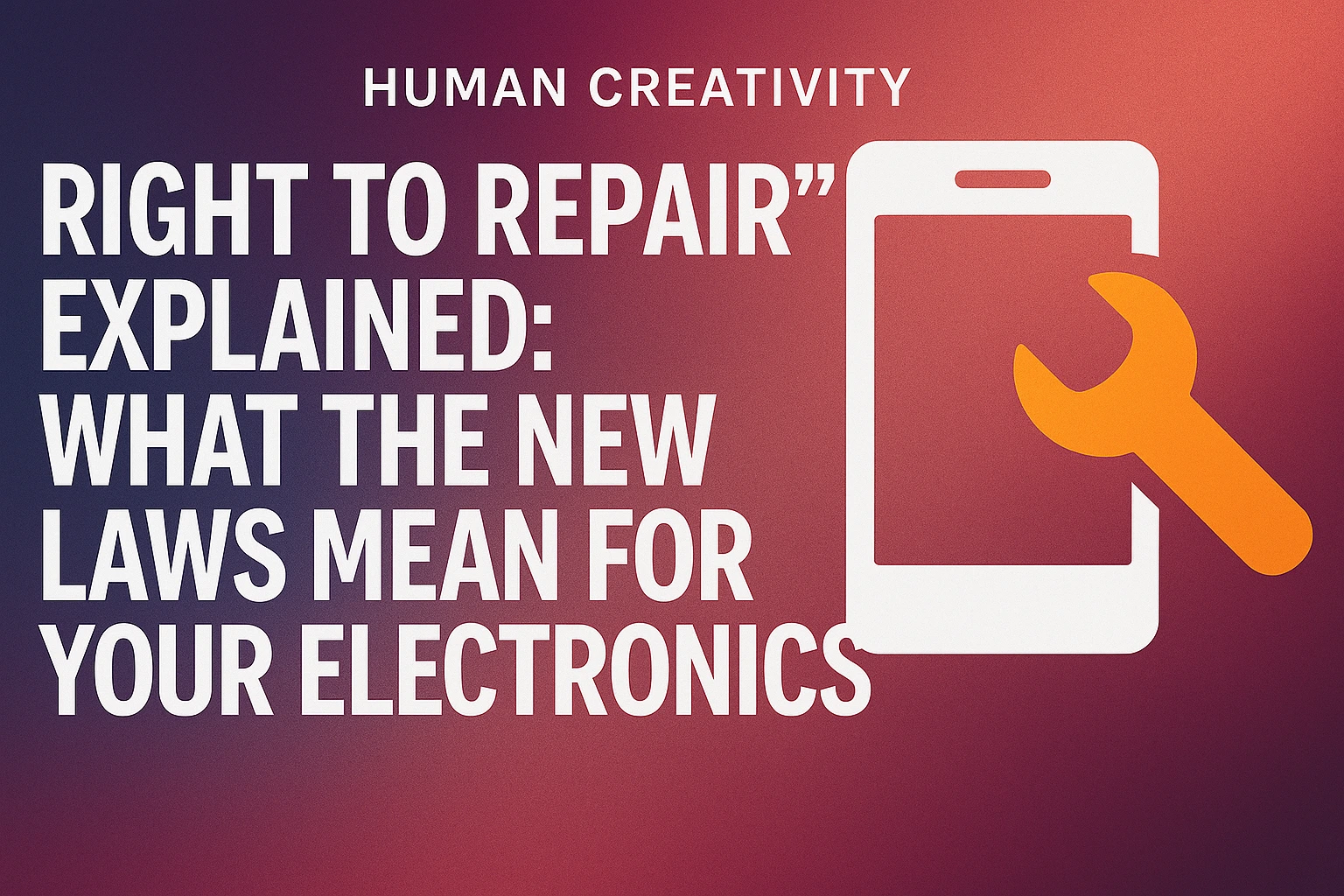We’ve all been there. Your smartphone, just a couple of years old, starts to slow down. The battery life plummets. Or, worse, you drop it and the screen shatters. You take it to the manufacturer or an authorized shop and receive a shocking repair quote that costs almost as much as a new device. This frustrating experience is at the heart of a growing global movement: “Right to Repair.”
For years, manufacturers have made their devices increasingly difficult, if not impossible, for consumers or independent shops to fix. They used tactics like gluing components together, creating proprietary screws, and, most effectively, restricting access to official parts and diagnostic tools.
But the tide is turning. Governments around the world, including in the US, Europe, and even parts of India, are passing new laws to combat this. But what does “Right to Repair” actually mean for you and the electronics you own?
What is the “Right to Repair”?
At its core, “Right to Repair” is the simple idea that when you buy a product, you own it. And as the owner, you should have the right to repair it yourself or take it to any independent repair shop of your choice.
The movement isn’t just about consumer rights; it’s also a massive environmental issue. A “throw-away” culture, where it’s cheaper to replace a phone than fix it, generates millions of tons of e-waste every year. Right to Repair aims to extend the lifespan of our devices, saving consumers money and reducing environmental strain.
New legislation typically mandates that manufacturers do three key things:
- Make Parts Available: They must sell genuine spare parts (like batteries, screens, and ports) not just to their “authorized” partners but also to the public and independent repair shops at a fair price.
- Provide Diagnostic Tools: They must provide access to the same diagnostic software and tools that their own technicians use to identify problems.
- Publish Repair Manuals: They must make service manuals and schematics public, so a trained technician (or a skilled DIY-er) can understand how to safely disassemble and repair the device.
What This Means for Your Devices
The impact of these new laws is becoming more and more visible.
- Longer Lifespans: The most immediate benefit is that your devices will last longer. A simple battery replacement, which might have cost an exorbitant amount or been impossible before, is now a viable option. This extends the life of a $1000 smartphone from two years to potentially four or five.
- More Competition and Lower Prices: With independent shops able to compete with manufacturers for your repair business, prices will naturally come down. You’ll have the option to shop around for the best price instead of being locked into a single, expensive service.
- Empowerment for Consumers: You regain control over your own property. If you have the technical skill, you can order the parts and fix your own laptop, saving hundreds.
- A Booming Second-Hand Market: A more repairable device is a more valuable device. This will strengthen the market for refurbished and second-hand electronics, giving you better options to buy and sell used gadgets.
The Bottom Line
“Right to Repair” is a significant win for consumers. It pushes back against planned obsolescence—the idea that products are intentionally designed to fail after a certain time. While manufacturers argue that these laws could compromise device security or safety, advocates maintain that these are solvable problems.
So, the next time you’re shopping for a new laptop or phone, look for its “repairability score,” a new metric gaining popularity. Choosing a device that is easier to fix isn’t just a smart financial decision; it’s a vote for a more sustainable and consumer-friendly future.
